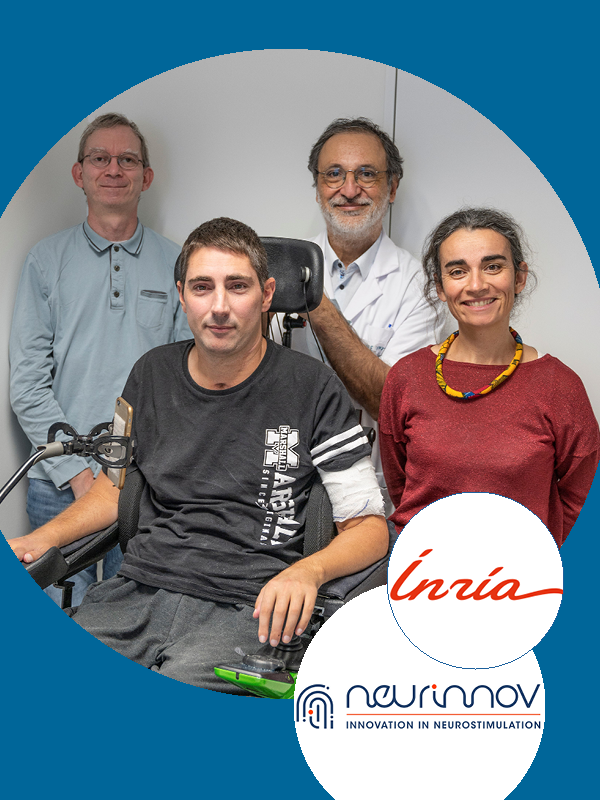Tetraplegia is a massively limiting condition, often caused by serious accidents, in which individuals are unable to move their legs or hands. Affected people are completely dependant on caregivers’ help around the clock. Any assistive device that could help these patients regain some control over their limbs, especially their hands, would be a tremendous achievement.
An interdisciplinary team at Montpellier, including researchers from the institute INRIA, surgeons from the clinic St. Jean Orthosud, clinicians from the USSAP Rehabilitation Center and biotechnology engineers from the company NEURINNOV, have joined forces towards this end. Members of the team have been using CorTec’s unique multi-contact spiral epineural cuff electrodes for epineural stimulation for years. Using these electrodes to stimulate the medial and the radial nerves in the arm, they have already shown that functional hand movements could be elicited, including useful grip types for everyday life, such as the “key grip”, the “power grip” and the “hook grip”. This preliminary work, however, was done in anesthetized patients.
The logical next step was to attempt a similar feat in awake patients, who got the electrodes implanted for a limited period of time (28 days). In a research paper published in one of the most prestigious scientific journals (Nature), the authors now presented their successes. In two tetraplegic patients, the neurostimulation could induce functional and powerful grasping movements, which remained consistent and stable over the whole duration of implantation. What’s more, the patients learned to produce the movements themselves, using an intuitive interface controlled by residual voluntary movements of their shoulder or head. In an impressive movie, the authors show one of the subject performing meaningful actions with this setup, such as picking up food from a plate and feeding himself.
Despite this impressive success, a few drawbacks still need to be considered:
First, the patients’ hands had to be supported by splints to maintain the wrist at a functional extended position. Second, the stimulation settings and the interface had to be individually designed and adjusted for each patient. Third, and most importantly, the setup was using percutaneous cables. A fully implantable solution without any skin breach will be needed to arrive at an assistive system that is suitable for everyday life. Given the swift progress in implantable technologies, however, provided, for example, by CorTec and other companies in the sector, finding a solution for this seems only a matter of time.
Citation:
Coste CA, William L, Fonseca L, Hiairrassary A, Andreu D, Geffrier A, Teissier J, Fattal C, Guiraud D. Activating effective functional hand movements in individuals with complete tetraplegia through neural stimulation. Sci Rep. 2022 Oct 6;12(1):16189. doi: 10.1038/s41598-022-19906-x. PMID: 36202865; PMCID: PMC9537317.
Picture description:
In the back from left to right: Dr. David Guiraud (INRIA research Director and NEURINNOV CSO and Dr Charles Fattal (USSAP, Bouffard Vercelli Rehabailitation Center, Perpignan) / In the front from left to right: Jérôme (first patient) and Dr. Christine Azevedo Coste (INRIA Research Director) / [not in the picture: Dr. Jacques Teissier (surgeon, St Jean Clinic, Saint Jean de Védas)]
